
views
Bonding with Your Pet
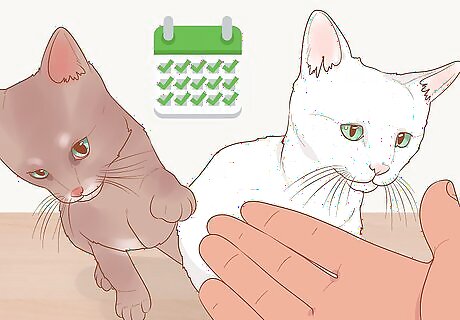
Play with your pet every day. To give your pet the physical and mental exercise they need, do your best to play together every day. If you have a dog, play games like fetch and hide and seek. If you have a cat, play with feathers, streamers, string, and toy mice. Daily playtime is especially important if you have a cat or dog. However, other animals need playtime, too. For instance, rabbits need some time out of their cage to exercise. Make sure a room is safe before letting a rabbit, rodent, or other small pet out of their cage. To keep them safe, set up a pen so they can’t escape.
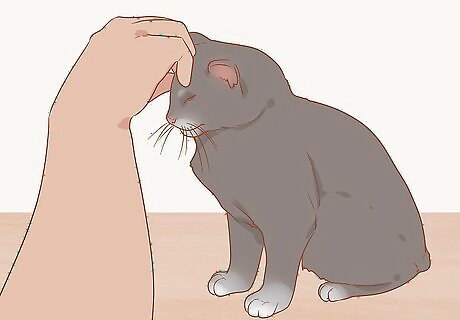
Scratch and rub your pet where they like to be touched. As long as you handle your pet properly, physical contact is a great way to build your bond. Animals have different favorite spots, so learn where your pet likes to be rubbed or scratched. For example, if you have a dog, try scratching their ears and rubbing their belly to show them how much you care. If you have a cat, let them rub their face against your hand, scratch their head, and stroke them from nose to tail. Cats usually don't like having their belly or tail touched. While people show affection by hugging, most cats and dogs don’t like to be hugged. For rabbits, rodents, and other small furry friends, be sure to use a gentle touch. Note that rabbits get stressed out when they’re over-handled.Tip: Before you touch your cat or dog, hold your hand near its nose and let it give you a sniff to avoid startling it.
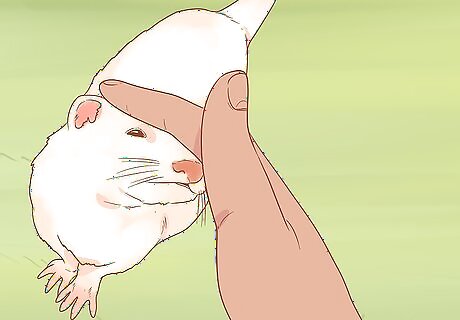
Give your pet plenty of praise. Use a happy tone of voice and tell your pet how much you love them. When they obey a command or behave well, heap on the praise to let them know they're doing a good job. Both cats and dogs can recognize words and tell the difference between happy and angry tones. Additionally, from rabbits to horses, lots of other animals can identify happy tones and words. If you have a reptile, they may not hear or understand verbal praise, but you can still gently stroke their head or offer tasty treats to show your affection. Just be careful if you have a snake or other reptile that might bite.

Talk to your pet with a soothing voice daily. Just as praise strengthens your bond, using a calm, soothing voice can help your pet become more comfortable with your presence. When you get home, try greeting your pet by saying something like, “There's my little puppy dog,” or, “Who's the best kitty in the whole world?” in a gentle, comforting tone of voice. When you're hanging out with your little bud, try scratching their favorite spots to be pet and softly tell them how much you love them. That'll make them feel super safe and cozy!
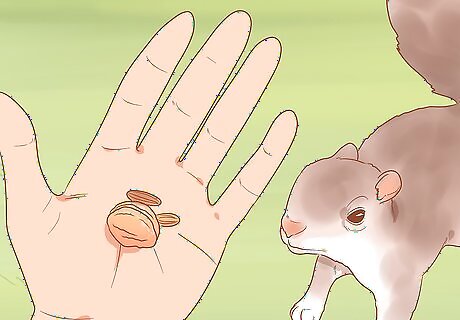
Reward your pet with healthy treats. Feeding a cat or dog by hand is one of the best ways to strengthen your bond. Offering treats when your pet obeys a command can also help you encourage them to behave. Treats can also help you bond with lots of other types of pets, such as rabbits and parrots. Keep in mind too many treats can put your pet’s health at risk. As a rule of thumb, treats should account for less than 10% of your pet’s diet. Small slices of carrot or apple are healthy options for dogs. Catnip is the perfect way to reward your cat without adding extra calories to their diet.
Showing Your Pet Respect

Give your pet space if they don't want to be touched. Get to know how your pet communicates, and respect their boundaries if they want to be left alone. Different types of animals communicate in unique ways, so do a little research on how your pet expresses themself. For instance, a dog is happy when they wag their tail, but a cat who's wagging their tail is typically agitated. Other signs of agitation in cats include a hunched back, fur standing on end, ears pinned back, hissing, and growling. For dogs, signs of stress include pinned back ears, a rigid body, wide eyes, yawning, growling, and excessive barking.
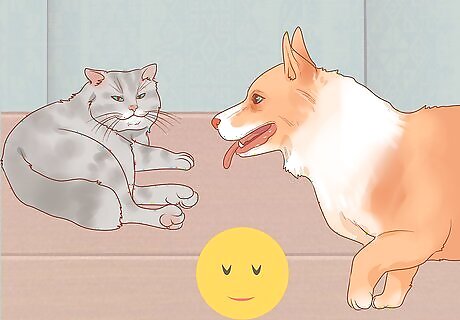
Keep their environment as stress-free as possible. Do your best to keep things calm and predictable. Stick to a regular schedule, avoid frequently rearranging furniture, and never taunt your pet. Animals love routines; unpredictability and lots of commotion are upsetting for pets. Additionally, if you have multiple pets, keep them separate if they don’t along. If you have a small animal, like a rabbit, make sure your cat or dog can’t go near them.
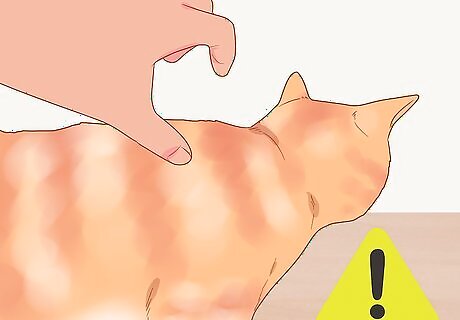
Avoid sneaking up on or startling your pet. Try not to touch or approach your pet from the back. If you do, say something like “Hey Buddy!” or “Here Kitty!” to announce your presence. Never intentionally try to scare or sneak up on your pet. Startling a pet stresses them out, and a cat or dog could scratch or bite you. Some pets, such as rabbits, may experience serious health issues if they’re startled.Let sleeping dogs lie: If your pet is sleeping, let it rest to avoid spooking it. Even nice cats and dogs can scratch or bite when they’re woken up suddenly.
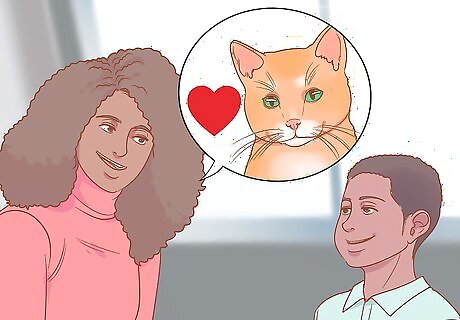
Make sure everyone in your family knows how to respect animals. Whether you’re a parent or child, discuss the right ways to treat your pet with the rest of your family. If you have younger siblings, make sure they know how to respect your pet’s space and aren’t rough with them. If you’re a parent, talk to your kids about treating animals with respect from a young age. To prevent accidents, always supervise your younger children when they interact with pets.
Keeping Your Pet Healthy
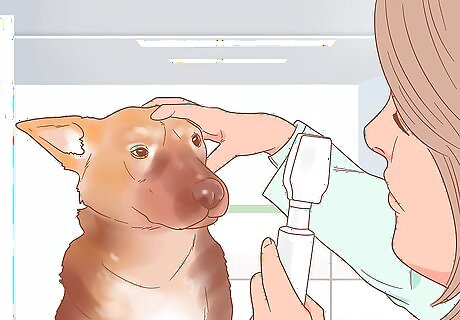
Take your pet to the vet regularly. Annual check-ups are recommended for most pets. If your pet is older or has a long-term illness, they'll need to see the vet more often. If you have a cat or a dog, make sure they receive all vaccinations required by your local laws. You should also regularly give your cat or dog medication to prevent fleas and ticks.
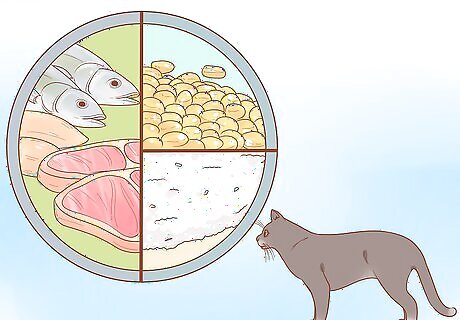
Feed them a balanced diet to help them maintain a healthy weight. Obesity dramatically increases your pet’s risk of injury and illness, so keep their diet in check. Buy commercial pet food labeled for your animal's age and species, measure the amount of food you offer, and give your pal treats in moderation. Check the pet food label or talk to the vet about the right amount of food to give your pet each day.

Make sure your pet gets plenty of exercise every day. Exercise can also help keep your pet’s weight in check, so play with them and provide enriching toys to keep them active. If you have a dog, be sure to take them on daily brisk walks. The right amount of exercise depends on your pet's age and species. For instance, a lap dog needs less exercise than a working breed, and a puppy or senior dog can't run around as much as a healthy adult dog.

Protect them from extreme temperatures and other hazards. If your cat or dog spends a lot of time outside, make sure they have access to a shelter with a roof. Avoid keeping your pet outside in hot weather or if the temperature is below freezing. If you keep your pet in a cage or tank, make sure the conditions meet their specific needs. For instance, if you own a reptile, maintain the temperature and humidity levels recommended for their species.
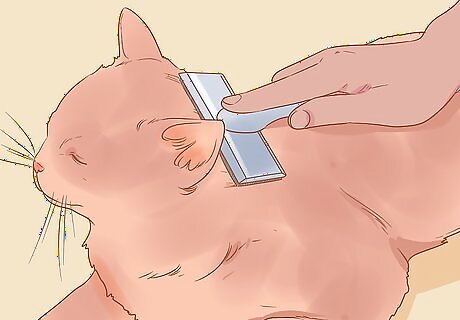
Keep your pet clean and well-groomed. Brush your furry friend at least a few times a week; pets with long coats need daily brushing. If you have a dog, wash it every 2 to 4 weeks or if they get dirty. Cats are meticulous about grooming, so they generally don’t need baths unless they get into something that would be harmful to lick off, such as motor oil or cleaning supplies. Grooming requirements vary by species, so check with the vet if you’re not sure about your pet’s needs. If you keep your pet in a cage or tank, be sure to clean their habitat regularly.Clean your pet’s teeth: Dental care is an important and often overlooked aspect of grooming. Cats, dogs, and even ferrets require regular brushing with a pet-safe toothpaste.




















Comments
0 comment